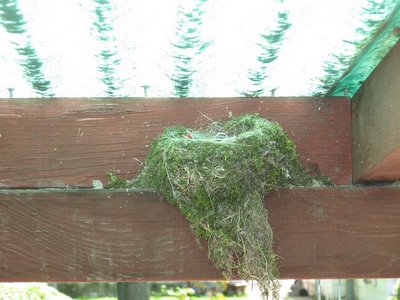
I love the variety of birdlife here. The populations are different from the front yard to the back. Out in back are the robins and this pair of kingbirds. I've never seen the kingbirds out front, and I've seen a robin out front only rarely. There are other birds in the woods in the back that I haven't identified yet. Out in front, the goldfinches, house finches, and purple finches that were eating me out of house and home for the last couple of months have been visiting the feeder much less frequently. They still come around, but only one or two at a time and they don't stick around all day the way they did. The chickadees, nuthatches, titmice, and juncos are also less frequent visitors; they must all be sitting on nests. (Gosh, just as I typed that sentence, a titmouse flew up to the feeder!) The cardinal pair is still coming to feed in the early morning and the mid- to late-evening (they are breathtakingly beautiful, even the duller female), and the sparrows and brown-headed cowbirds are still hanging around. The male red-winged blackbirds have apparently found their mates and begun their clutches; until the last few days I could just about count on seeing a male red-winged blackbird displaying out front, strutting around on the grass surrounding the feeder, wings half-spread and the colored bars fluffed out for maximum exposure, bright red epaulets on the shiny black cape of his wings. But now they, too, fly in to eat and fly out again. I sure did enjoy the show while it lasted, though, and I'm looking forward to an encore performance next spring.
(Postscript - I just went out to take the pic above, and saw two baby beaks in the nest, so at least two eggs have hatched so far.)
No comments:
Post a Comment